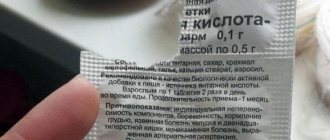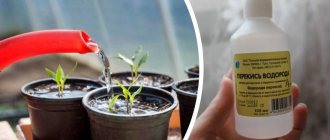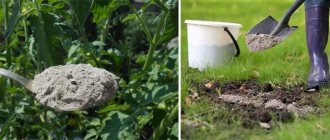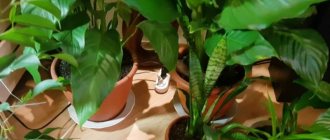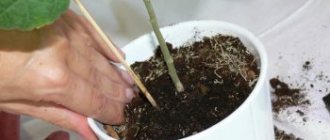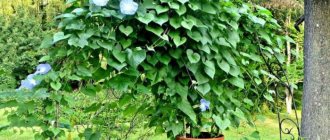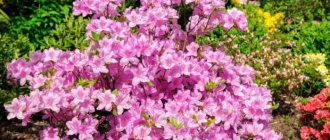When growing plants in your garden, you always want to feed them with useful substances. After all, even on fertile soils they lack one or another element.
A magical stimulator of the growth and development of garden crops is succinic acid. This is an invaluable assistant for a summer resident, which can be bought at a pharmacy for pennies.
Its range of applications is quite wide. This is a natural, environmentally friendly fertilizer, a growth and flowering activator, and an immunomodulator. Participates in the process of cellular respiration of oxygen-breathing organisms and plants.
Experienced gardeners and flower growers know what the product is and what it looks like. In appearance and methods of application, it differs little from others. At the same time, it is economical and harmless.
Before use, you should study the instructions, not forgetting the recommended dosage.
How to use for watering and fertilizing
Despite the fact that succinic acid is not harmful to flora, it must be used correctly. Only in this case will there be an effect. Methods of application are different for each specific case. They depend on the purpose, the type and variety of crop.
What does it look like and what is it for?
Succinic acid is a product of amber processing. It has the form of an odorless and colorless powder. It dissolves well in water.
It is found in minimal quantities in many plants, as well as inorganic formations: coal, amber and maleic anhydride. From the latter it is extracted for industrial purposes.
In the food industry, the substance is used as an acidulant. In agriculture, its purpose is to stimulate plant growth, accelerate development and increase productivity.
Useful properties of succinic acid
Succinic (ethane-1,2-dicarboxylic) acid is a colorless, odorless powder, highly soluble in alcohol and water. In its natural form, in small quantities, it is found in almost all plants, and also in amber, brown coal and maleic anhydride, from which it is mainly extracted for industrial purposes.
How is succinic acid useful for plants? It normalizes the natural microflora of the soil and has a general strengthening effect: it helps to better absorb nutrients and fertilizers, stimulates germination and growth, improves survival rate, accelerates the development of indoor flowers and increases the yield of garden crops. If you are still an inexperienced gardener and are afraid to overdo it with strong drugs, “amber” is your option.
Succinic acid is not a fertilizer in the truest sense of the word and is not capable of replacing applied fertilizers. It only helps plants better absorb them and prevents excessive accumulation of nitrogenous substances.
Is it possible to harm plants using succinic acid? By itself, this additive cannot harm flowers and vegetables, even if, due to inexperience, you exceed its recommended concentration - this acid quickly disintegrates in light and air and does not accumulate in plant tissues. However, if used systematically, it can acidify the soil. Therefore, if you are keen on using “amber”, you should lime the soil from time to time.
Instructions for use
For cucumbers and tomatoes
When growing cucumbers, succinic acid is used to treat seeds before planting. Prepare a solution of low concentration (2 g of substance per 20 liters of water). Soak the seeds in it for a day. Soaking will help the cucumbers sprout faster.
Tomatoes increase their yield if you use tablets or powder during the budding period. Three treatments are carried out at weekly intervals. A single dosage is 2 g of the substance per 2 buckets of water. Processing tomatoes causes rapid flowering and formation of ovaries.
How to use for processing potatoes
When planting potatoes, the tubers are processed. Planting material is sprayed with a 0.1 percent solution. After processing, they are left in the sun until sprouts appear or immediately planted in the ground. Using an acid solution accelerates flowering and subsequently leads to increased yield.
How to use when growing strawberries
When growing strawberries, succinic acid is used to stimulate root development. It protects the plant from exposure to high temperatures and diseases, increases productivity. To prepare the solution, take 0.75 g of the substance into a bucket of water.
Use for pepper spray
Peppers are treated by spraying with a 0.1% solution in 3 stages. The finished product is used before flowering and twice after flowering.
To treat any of the plants, a chemical in tablets or powder is used.
Precautionary measures
The absence of harm to the environment and the human body is one of its advantages. But precautions must be taken since it is a chemical compound. If used incorrectly, it can lead to negative consequences.
Gloves are required when working with the substance. Make sure that the substance does not come into contact with exposed skin or eyes. This is very important, do not neglect safety.
If it so happens that the drug does get on the mucous membranes (in the eye or on the skin), the affected area should be immediately washed with water.
If a negative reaction occurs, you should consult a doctor. In some cases, when working with acid, irritation of the respiratory system occurs, which manifests itself in the form of an allergic reaction.
In such a situation, you should also seek medical help.
Benefits and harms
The natural substance helps animal and plant organisms ensure normal life processes. All living organisms need energy, which is generated as a result of oxidative processes in cells.
Without succinic acid, these processes are inhibited. It helps in the formation of oxygen. Therefore, it is useful not only for humans, animals, but also for plants.
What benefits does it bring to vegetable and garden crops?
Beneficial features:
- Acceleration of seedling growth;
- Improving seed germination;
- Activation of the process of vegetation and flowering of crops;
- Normalization of natural soil microflora;
- Anti-stress effect;
- Increased resistance to frost;
- Disease control;
- Prevention of accumulation of toxins.
The main effect for which acid is famous among gardeners is the acceleration of growth and development. An aqueous solution is used for this purpose. Before planting, seeds and cuttings are soaked in it, roots are treated or foliar sprays are carried out.
Special forms of biostimulants have been created for treating garden plants. Gardeners use powders or tablets that are sold in regular pharmacies.
In fact, this substance is not a top dressing or fertilizer, or a panacea for any diseases.
It has a broader purpose: it helps plants better absorb nutrients coming from the soil, preventing excessive accumulation of nitrogenous substances in the roots and leaves.
The specific effect this substance produces depends on how it is used. If acid is placed in the soil, the roots are strengthened, and when young shoots are treated, their growth and formation of new ones improves.
Treatment helps plants resist the action of aggressive external factors. Timely application can revive a dying plant. First you need to figure out how often to water or add to the soil.
How does soil change when watered?
The substance is considered a natural regulator of soil acidity. It normalizes the soil microflora and promotes the development of vital activity of the microorganisms that make up its composition.
It does not harm the environment and does not have a negative impact on the soil, which is an important advantage. The composition of the soil becomes more acidic, but does not radically change its structure.
It does not cause environmental pollution, which distinguishes it favorably from most fertilizers. It destroys existing toxic compounds in the soil, thereby making it safe, and prevents the accumulation of nitrates in the substrate.
Is there any harm to plants?
Minimum. The chemical substance is organic in nature and in case of overdose is not capable of accumulating in tissues. Decomposes when exposed to air and light. But you should not exceed the specified dosage, as there is a risk of soil acidification.
If necessary, the effect can be neutralized by liming the soil.
Indications for use in the garden
If there is a lack of acid in the soil, plants report this by giving certain signals:
- If it is weak, with sluggish and poorly growing shoots, it makes sense to process it according to the instructions.
- Poor seed germination makes it clear that the soil is not rich enough in microelements. In this case, you can use this germination and growth stimulator.
- Any weakening of the crop, susceptibility to disease and poor yield are the main indications for use.
Why do gardeners fertilize and water?
Succinic acid is chosen as an additional fertilizer. It cannot replace basic fertilizer, but makes it more effective. Thanks to this, fertilizing can be significantly reduced.
There are several main reasons and purposes why gardeners feed and water seeds or seedlings with this simple, safe but popular remedy.
- At the planting stage, the seed is pre-soaked to activate germination.
- Treatment of cuttings improves the process of root formation.
- Treatment of roots and shoots strengthens the immune system and promotes active growth.
- Protection against diseases is another reason for use.
Succinic acid does not eliminate diseases or kill parasites, but it greatly increases the natural immunity of plants. Sometimes it is used in a vegetable garden or garden purposefully, to increase productivity and improve the taste of fruits.
The use of succinic acid for growing seedlings as a growth stimulant: instructions
The frequency substance is used as a growth stimulant. To do this, the roots are kept in an acid solution for 1 day before planting the seedlings. After this, the seedlings are planted. Next, you need to spray. It is carried out every two weeks using a sprayer. You need to spray the leaves and stems.
The use of succinic acid for growing seedlings as a growth stimulant: instructions
Use of tablets and powder
Everyone knows that all living organisms on earth consist of organic and inorganic substances. The substance in question belongs to carboxylic acids and is of organic origin.
It is a natural component of all living organisms on the Planet, including plants. Fertilizing and spraying enrich garden crops with microelements that make up the substance.
I recommend watching the video (be sure to watch it to the end), you will learn a lot of new things:
The product protects the plant from overheating and cold, excessive waterlogging and drought. Strengthens resistance to diseases, accelerates the process of growth and development.
How to breed for watering and fertilizing
Before diluting, you need to determine the dosage:
- To obtain a 0.1 percent solution, 1 g of the drug in powder form is diluted in 1 liter of water.
- If you use tablets for watering, you need to take 10 pieces of 0.1 g per 1 liter of water.
- If a higher concentration is required, the number of tablets can be increased.
The process of creating the desired concentration consists of several stages. Pour the substance into a container with a small amount of water. Heat the solution until all the grains dissolve. Then add water to the desired concentration.
The solution is used for 3 days. The temperature at which the solution should be stored should not fall below 25 degrees. Using the product after three days will be ineffective.
How to apply and how often to water
Depending on the plant variety, as well as the goals set for this procedure, there are several main types of processing. It could be:
- Soaking planting material and root system in the prepared solution;
- Spraying plant shoots;
- Wiping stems and leaves with a solution;
- Watering with solution.
Any of the methods requires compliance with the dosage and the implementation of basic precautions.
Pre-sowing treatment involves soaking seeds to improve their germination. Soaking solution: take 1 g of substance per 10 liters of warm water.
Dry seeds are soaked in the prepared solution. They are kept for 12 to 24 hours. Then you can lay it out on a dry cloth. After drying, the seeds are sown in a previously prepared substrate.
Pre-sowing treatment is especially useful for old seeds, for plants that reproduce by tubers and bulbs (potatoes, Jerusalem artichoke, dahlias, gladioli). Before planting, they are not soaked, but sprayed with a solution.
After about 2 hours, they are kept under film and planted in the ground.
To root cuttings, a solution of higher concentration is used compared to seed treatment. The prepared cuttings are immersed in it so that the cut goes 2 cm deep and left for 24 hours.
It is important to follow the rooting technology - there must be 2-3 leaves on the cutting.
Before immersion, wrap fragile cuttings (the cut area) with cotton wool. The solution activates the appearance of roots on the cuttings.
The survival rate of seedlings of any garden crop will improve if it is watered with an acid solution before planting. It is necessary to dilute for feeding and watering so that the concentration is 0.25%. Water the seedlings no earlier than half an hour before planting.
The second effective way for seedlings is to spray them with a solution 1 or 2 times a day until planting.
Strengthening the root system. To do this, water the already planted plants with a 0.2 percent solution so that the root soil is saturated to 15-30 cm. The procedure is repeated a week later. The second option for root stimulation is soaking for 1-1.5 hours in a solution of the same concentration. After treatment, the roots are dried and after 30-40 minutes. planted in the soil.
How to fertilize for growth and flowering? Spraying with a solution of 0.1 percent concentration is useful. The procedure used depends on the purpose.
- If it is necessary to achieve more active vegetation during the growth period, you need to spray the stems and leaves every 2-3 weeks.
- To stimulate flowering, spraying is carried out in 2 or 3 stages. The first is before flowering, during this period it is sprayed twice a day.
Strengthening the immune system and protecting against stress. Any stress, be it hypothermia, excessive moisture, or even replanting, harms plants and negatively affects their growth.
The main indicator of stress can be considered a deterioration in the appearance of leaves, their falling or lack of flowering. A special anti-stress treatment helps to cope with this. To do this, the roots and leaves are sprayed with a solution in a 0.2 percent concentration. The spray should be fairly fine - in the form of small droplets. Treat every 2-3 weeks.
Disease prevention also involves treatment with succinic acid. If the plants are weakened or have recently been sick, it is worth preparing a strong solution with a concentration of 2.5%. You can literally bathe the leaves and stems in it for 10 minutes or spray it generously. After the first procedure, you can wait a few weeks and repeat again.
Where to buy acid
You can buy a natural activator at any specialized store for gardeners and flower growers. You immediately need to decide on the form of use.
For greater effect, it is recommended to purchase the substance in its pure form, which looks like a powder, and independently prepare solutions from it for soaking, spraying or watering.
Pharmacy medications are sold in tablets and are also effective when used correctly.
Depending on the format of the drug, its concentration and volume, the price may vary. In tablets, the cost starts from 20-25 rubles per package. A package of powder can cost from 100 rubles or more.
For gardeners and gardeners, the product is a universal assistant, a growth and flowering enhancer, and in some cases even a resuscitator.
The use of different acids for treating orchids
Burshtinovaya
Burshtinic (succinic) acid or succinic acid is a carboxylic acid. It is colorless crystals, similar to sugar, highly soluble in warm water.
In nature, this compound is found in amber, brown coal and other minerals, and can be found in small quantities in many plants.
It is used in plant growing and agriculture as an auxiliary substance for fertilizing. Shows growth stimulant properties, increases the number of inflorescences and plant yield.
Advantages and disadvantages
Burshtinic acid is widely available and can be purchased at a pharmacy or flower shop . Available in the form of tablets or powder of small crystals:
- stimulates the plant immune system;
- helps them more easily endure stress in the form of transfers, unfavorable environmental conditions or moving;
- slightly accelerates the growth, development and regeneration of cells, increases the number of flowers;
- makes the plant a little more resistant to diseases and pests.
Among the advantages is reasonable price .
Succinic acid is a cheap and effective drug.
A significant disadvantage of the drug is that it is advertised and its properties are not entirely adequately assessed, as a result of which the drug may not meet the high expectations of the consumer.
Important! Succinic acid itself is harmless to plants.
Mode of application
Acid crystals or tablets crushed into powder are dissolved in warm water ( 1 gram of acid per liter of water ). It is better to prepare a stock solution in warm water and then dilute it with water at room temperature. The shelf life of the prepared solution is 2-3 days.
It is necessary to water orchids at the root or by immersion, soaking the pot with the plant in the solution for 15-20 minutes. After the procedure, you need to make sure that the solution has drained from the pot, and it should not stagnate in the pots or tray. Plants can also be sprayed with succinic acid.
Succinic acid can be either watered or sprayed.
Advice! For spraying, use a fine sprayer that produces a misty stream. It is necessary to spray all vegetative parts of the plant.
The drug is most effective during the growing season , that is, when the plants are in a period of active growth and gain of green mass. It is unacceptable to use any growth stimulants, including succinic acid, during the dormant period of plants. However, adult orchids can be brought out of hibernation in the spring with a weak (0.5 g per liter of water) solution of succinic acid.
It is better to carry out treatment in the first half of the day or in the morning , when photosynthesis processes are activated. You cannot spray orchids at air temperatures below 22 ° C - this can lead to mold or rot.
After treatment, inspect the plants for accumulated moisture in the leaf axils - it must be removed with a napkin or paper towel.
Reviews
Marina, Vologda. “I use it before transplantation. I water it 3 days before the procedure. During this time, succinic acid is absorbed. And it turns out that the plants are cheerful and cheerful - at that moment I replant them. They tolerate stress more easily, take root faster, and their metabolism increases. An environmentally friendly substance, you can safely use it at home where cats and dogs live. If a cat decides to eat a flower, then nothing will happen to it.”
Alina, Kursk. “I bought it at the pharmacy and sprayed it on my house plants. I can say that amber is clearly over-praised. It remains unclear where such a stir comes from, because I did not notice any “rapid growth” or mass appearance of young greenery. In short, I decided not to resort to this kind of lottery anymore, because you don’t know for sure what result you will get. Other stimulants, such as zircon or epin, perform much better.”
Dmitry, Naberezhnye Chelny. “Recommended at the store, bought it cheap. I will say that for the money, as a means to maintain, so to speak, the pants of plants, in general it is not bad. The flowers have become more resilient and, it seemed to me, more easily tolerate the atmosphere of the apartment. But you shouldn’t expect any stars from the sky from succinic acid. You can add a little bit, little by little, spray it, and the result will come.”
Bornaya
Boric or orthoboric acid is a weak monobasic acid that has found widespread use, including in crop production as a boron fertilizer.
It is colorless, odorless, scale-like crystals . Slightly soluble in water. It is found in nature in the form of the mineral sassolina, as well as in hot mineral water springs.
You can buy boric acid at a pharmacy, flower shop or garden center . An interesting fact is that boron does not pass from dying shoots and plant organs to living and young ones, that is, the plant needs a constant supply of boron during the active growing season.
Advantages and disadvantages
Boron is a fairly important trace element that is necessary for the normal functioning of plants , and boric acid is the most accessible boron compound. Bor:
- helps regulate metabolic processes;
- normalizes the production of nitrogen compounds and increases the chlorophyll content in the leaves;
- promotes the formation of more flowers.
Boron deficiency causes retarded growth and development in plants, which then causes disease and vulnerability to pests.
Inappropriate handling of the drug can cause an overdose . But this is not a drawback, but rather a feature that should be taken into account. An excess of boron can cause burns to leaves, roots and other plant organs. At the same time, the leaves turn yellow, curl and fall off.
Excess boron can cause plant burns.
Attention! Boric acid can be dangerous if ingested uncontrolled.
Mode of application
The use of boric acid stimulates the formation of new leaves, as well as the development of shoots and roots. For watering and soaking, a solution is prepared at the rate of grams of acid per liter of warm water.
The cooking recipe is generally the same as for succinic acid. For spraying, the dose of boric acid is reduced by half.
The dosages of each specific drug may differ from those indicated above. Read the instructions on the package carefully.
Treatments with the drug should be carried out only during the active growing season, as well as in the budding phase. When the orchids bloom, fertilizing with boron is stopped. For spraying, use a fine mist sprayer.
All vegetative parts of the plant need to be treated. Spraying of orchids is not carried out if the temperature is below 22 °C. Excess moisture in the leaf axils should be blotted with a napkin or paper towel.
Reviews
Natalya, Kirov. “I spray young baby orchids with boric acid. Most of them grow independently during the first year. Of course, for them I make the solution much weaker, because they don’t need much - that’s it. And two is that the substance is not washed out by rain and does not go into the soil, since the plants are indoors. In principle, I'm happy with the result. It works very well as an additive to the main feeding. I didn’t notice any side effects.”
Lisa, Stavropol. “I read somewhere that “the most dangerous trace element in excess is boron.” Therefore, I try to add it less than specified, since microelements are already present in the fertilizers with which I feed my orchids. In general, I think that each fertilizer should be used separately very carefully. An overabundance can be harmful and then you will sit, look at the bending plant and think where you went wrong.”
Sergey, Volokolamsk. “I feed with boron in a concentration of one gram per two liters of water. No more is needed, plants have enough of this amount, because it is a MICROElement. And then, the use is justified only if there is a boron deficiency.”
Nicotine
Nicotinic acid or nicotine, also known as niacin or vitamin B3. White crystalline powder, odorless . Takes part in hormonal metabolism and redox reactions in living cells. Sold in pharmacies in ampoules of 1 ml.
A nicotinic acid:
- used in plant growing as a fertilizer aimed at strengthening the plant’s immune system. For orchids, this means that they are more likely to recover after transplantation or illness;
- nicotinic acid also accelerates the process of formation of flowers and babies;
- a mandatory substance for successful resuscitation of an orchid.
Advantages and disadvantages
A very stable substance that can be mixed with other vitamins to prepare so-called vitamin cocktails. This will allow you to achieve maximum results. An overdose of nicotinic acid is dangerous for the plant. Destroys when heated and exposed to sunlight.
Mode of application
The contents of a 1 ml ampoule are diluted in 1 liter of settled water. Water should be at room temperature, or 2-3 °C higher, but not more than 25 °C. Then the pot with the plant is immersed in the solution and left for 20-30 minutes.
Attention! Due to the characteristics of the drug, the solution is not stored, but is used immediately on the spot. Repeated treatment can be carried out no earlier than after 10 days.
Niacin combines well with thiamine and ascorbic acid. In such a cocktail, both drugs enhance the effect of each other. The best results can be achieved by spraying the plant . A fine sprayer must be used. Try to treat all parts of the plant, it is especially important to get to the lower half of the leaf.
B3 goes well with B1 and ascorbic acid.
It is recommended to feed orchids with nicotinic acid during the active growing season. The plant should be in comfortable conditions. It is advisable to carry out spraying and processing in the evening or before dawn, at temperatures above 22 °C.
Reviews
Tatyana, Syktyvkar. “A very big plus is that when treated with vitamin, the evaporation of moisture by the plant is reduced. That is, it becomes more resistant to apartment conditions. Photosynthesis increases, which is very important if you have a non-sunny side and orchids remain in the shade even on the windowsill. If there is little nicotinic acid and also little light, then the plant grows slower and blooms worse.”
Maria, Nizhny Novgorod. “In the spring, I regularly make vitamin cocktails for my orchids. People have vitamin deficiency, and it’s the same for plants after winter - they are weakened, they need a boost of vigor. Nicotine works well with other vitamins. This stimulates the absorption of phosphorus and various microelements that are vital for the orchid, and indeed for other plants too. The orchids look great, I’m happy too.”
Stepan, Volgograd. “I take it from the pharmacy in regular glass ampoules. I dilute them in water, water some plants directly at the root, or soak orchids in a basin or spray them. The result always turns out as expected. I advise you to look at the composition on the back of containers with fertilizers; they come with the addition of vitamins. In this case, there is no need for additional feeding. Overdoses are extremely undesirable."
Ascorbic
Ascorbic acid (ascorbic acid) or vitamin C is an organic compound, white crystalline powder, sour in taste. Dissolves in water and alcohol.
Found naturally in many fruits and vegetables. One of the main substances in the human diet.
It is also used mainly in indoor plant growing as a component that enhances the effect of vitamin cocktails. You can buy ascorbic acid at the pharmacy.
For floriculture it is necessary to take it in liquid form, in ampoules of 1-2 ml.
Advantages and disadvantages
Has a general strengthening effect on plants . It brings the greatest benefit in combination with other vitamins, as it enhances their effect. Affects the plant’s immune system, making it more resistant to parasites and diseases.
When used in moderation, the drug does not have any negative effects .
Mode of application
As a rule, it is used as a component of a vitamin cocktail, at the rate of 1 ml of acid per 1 liter of water . The water for the solution should be at a temperature of up to 25 °C. Combines well with niacin and thiamine. The solution must be used locally as water-soluble vitamins are quickly destroyed by sunlight .
1 ml of vitamin C should be diluted in 1 liter of water.
Fertilizing with ascorbic acid must be carried out during the active growing season of the plant. The rules and methods of use are otherwise the same as for nicotinic acid.
Reviews
Valentin, Moscow. “I want to say that ascorbic acid increases the throughput of plant tissues. At the same time, water moves faster throughout the body and organs. It also enhances metabolism, which generally stimulates the plant to grow, as if putting it into work.”
Anastasia, Yekaterinburg. “I noticed that ascorbic acid supports plants and enhances the effect of other fertilizers. When leaves become chlorotic, they recover faster. Of course, vitamins alone, as they say, will not fill you up. Here it is important to apply everything in some complex, systematically, focusing on what the plant needs at this very moment.”
Galina, Vladivostok. “Last year I received vitamins that were past their expiration date; I dissolved them and watered them. As a result, all the plants acquired a well-groomed appearance and bloomed more than usual. I didn’t expect such a bright effect, I was pleasantly surprised.”
Other
In addition to those described above, there are other acids that can be used to support orchids. How to use them correctly is briefly described below:
- Citric acid is used to acidify excessively alkaline water for watering orchids. The required dosage is selected experimentally. To do this, use pH tests or litmus paper, they are sold in pharmacies, on the Internet or in pet stores;
- Oxalic acid is also used to soften hard tap water. The dosage is determined empirically, on average, approximately ¼ tsp. for 5 liters of water. Next, the water settles for 2-3 days. Then it is poured into another container, trying not to disturb the sediment;
- butyric acid is not used in its pure form, but indoyl-3-butyric acid (IBA) is a phytohormone of the auxin class, which is part of root formation stimulants. The scope of application is obvious. Dissolves in ethyl alcohol;
- folic acid - water-soluble vitamin B9 is used separately as a supplement, but more often as part of vitamin cocktails.
For indoor plants
Growing plants at home always causes stress for flowering crops. Sometimes they lack soil due to the small volume of the pots. Lack of oxygen and sunlight is always a serious test for flower crops.
Being an effective growth stimulator and natural adaptogen, the acid has a positive effect on indoor plants. She:
- Reduces the negative impact of stress factors (temperature, moisture-related and lighting);
- Increases the immunity of flowers to bacterial and fungal infections;
- Promotes the formation of beneficial soil microflora and rapid absorption of nutrients from the substrate;
- Well restores chlorophyll in leaves;
- Strengthens the root system after transplantation, activates the formation of new roots;
- Promotes rapid restoration of crops damaged by insect pests.
How to use fertilizer in tablets
If the substance is purchased in tablet form, then its dosage is 0.1 g. To get a liter of a strong 0.2% solution, you need to take 20 tablets. To speed up their dissolution, they are ground into powder. To obtain a 0.02% solution, take 2 tablets per 1 liter of water.
Aqueous solutions are prepared before use, as they quickly lose their beneficial properties. Store solutions for no more than 3 days.
How and when to spray plants
The fastest way to deliver nutrients is to process flower crops leaf by leaf. Solutions are absorbed more efficiently on the underside of the leaf, where the stomata are located.
Spraying is beneficial in the following cases:
- in the spring, when flowers emerge from hibernation;
- after pruning the stems to activate the development of lateral buds;
- after treatment with chemicals;
- after illness, damage by insects;
- after prolonged exposure to unfavorable conditions.
During flowering, crops are not sprayed. Evening or morning hours are convenient for work.
Benefits for roots
The effectiveness of succinic acid in stimulating root formation is moderate. Therefore, if you need to quickly root a flower cutting, it is better to choose stronger agents (Heteroauxin, Kornevin). But as a support and restoration of roots - that’s it.
For which flowering crops is succinic acid useful?
Experienced gardeners use acid to grow orchids as an indispensable auxiliary tool.
In addition to these flowers, the following flower crops respond well to treatment:
- dracaenas;
- ficus;
- begonias;
- palm trees (especially dates);
- roses;
- all types of succulents.
When you should not use succinic acid for feeding
Succinic acid, despite all its valuable properties for the plant, is still not a complex preparation. It simply activates internal forces. Therefore, if we are talking about serious damage by viral infections, you need to use drugs specially designed for treating the plant. This remedy will not cope with such an illness.
In addition, it is not recommended to use acid and its solution for indoor plants in pots in which the soil does not change. Constant spraying and watering with the solution will lead to the soil microflora being disturbed. The drug must be used in doses. For indoor crops, the norm is once a month, no more often.
It is also important to understand
that a product that stimulates growth and flowering should not be used when the plant is dormant.
You should not use the drug if the acidity of the soil is high.
Reviews
Reviews from gardeners who have used succinic acid to stimulate growth or strengthen plants are often positive. The most important thing is that resistance to diseases increases by strengthening your own immunity.
Gardeners note that the biostimulant is not able to completely protect their “wards” from diseases or parasites, but when used correctly, it effectively helps increase resistance. And strong immunity is the main thing.
To achieve the desired result, you must adhere to the recommendations of specialists and strictly follow the recommended dosage.
This economical product is indispensable for connoisseurs of environmentally friendly harvests.
Its use does not pollute the environment and is not dangerous to humans. I wish you high harvests, dear readers!
In what form is succinic acid used for plants?
Succinic acid for indoor plants and flowers is used either in the form of specialized biostimulant preparations of the same name, which can be purchased at a flower or farm store, or in the form of tablets and powders purchased at a regular pharmacy.
Don’t get confused - in a pharmacy for people, along with drugs called “succinic acid”, pharmacists can offer you many dietary supplements containing it - Yantavit, Yantarite, Mitomin, Enerlit, Kogitum, etc. These drugs are NOT suitable for gardeners and are intended exclusively for people - like food supplements, health and cosmetic products. Usually, in addition to pure succinic acid, they contain unnecessary and often harmful additives and active ingredients for plants.
There are no special safety precautions when working with succinic acid - it is non-toxic and does not pollute the environment, so you can only use gloves.
If the solution gets on your skin, rinse it generously with a baking soda solution and then with clean water.
Store dry amber preparations in a dry, dark place, at a temperature no higher than 25°C - this way it can remain in a usable condition for up to three years. Of course, it should be stored separately from medications and food.
Although the shelf life of ready-made solutions (read about them below) of some drugs is 2-3 days, they should be used within several hours - they quickly lose their beneficial properties when exposed to air.
